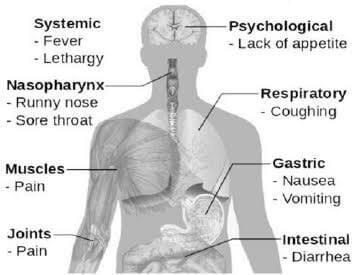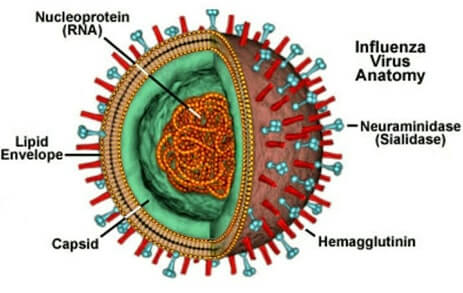Influenza Nursing Assignment
Introduction: Influenza is a viral disease that targets the respiratory system. Influenza is also termed as flu. The virus moves around the air in the form of droplets and when someone diseased person sneezes, coughs or talks the virus transmitted to the healthy body through oxygen into the respiratory tract. Someone also gets the virus through direct contact with the objects as the disease is contagious.
The virus changes it’s stained constantly and if the body had a face-off with the particular virus then the body itself had produced its own antibodies which can further fight against the same virus stain in the future. But if the other stain of the virus is transmitted directly or indirectly then the disease got infected.
Influenza Symptoms:
The disease seems to be cured as it comes on through sneezing, coughing or sore throats. But as it’s a flu, so the symptoms grow slow and steady to which got worse.
- The high temperature of 100.4 F.
- Muscle ache.
- Heavy sweating.
- Chilling of muscles.
- Tiredness and weakness.
- Sore throat.
- Congestion of nose.

Influenza Diagnosis:
A physical exam is tested for the sign and symptoms for influenza and a procedure to detect the presence of the virus. When Influenza is an epidemic then the test is only for a particular virus strain which is widespread at that time. The patient is accordingly tested on its unique signs and symptoms.
When someone is positive for a particular stain of the virus then the patient is advisable for polymerasechainreaction (PCR). PCR is more responds to check the particular stain of the influenza virus.

Treatment: If it’s a mild or medium level of infections then it can be cured by bed rest and sufficient fluid intake. But if it’s a severe type of infections then the medication is recommended by the doctor. Antiviral medicines like oseltamivir, zanamivir, peramivir, baloxavir can make the condition stable and prevent further infections. These medicines have side effects like vomiting and nausea which can be avoided by taking food before medicine intake.
Nursing Topics
- Registered Nurses Standards For Practice
- Reflection on Registered Nurse Standards for Practice
- Ambulatory care Nursing Homework Assignments Help
- Australian Healthcare System assignment help
- Clinical Judgment and Decision Making in Nursing
- Critical Thinking In Nursing Homework Assignments Help
- Families in Sickness and Health assignment answers
- Healthcare Management assignment help
- Spiritual Needs Assessment answers
- Therapeutic Nursing Homework Assignments Help
- Anxiety Disorders
- Arrhythmia
- Arthroplasty
- Autism
- Zika Virus
- Glaucoma
- Gallbladder and Biliary disease
- GERD
- GOUT
- Colorectal cancer
- Hepatitis B
- Hepatitis C
- Heart failure
- Hodgkin’s disease
- HPV and cervical cancer
- Hypertension
- Hypogonadism
- Immunization
- Infertility
- Inflammatory bowel disease
- Insulin Therapy
- Influenza
⯈ Child Nursing Help
- Benefits of pet therapy in children on the autism disorder spectrum
- The use of cough and cold medicines in very young children
- Improving asthma management in schools
- Does obesity in children cause risks for influenza complications?
- Management of pain in pediatric nursing
- Children's health insurance: a right or a privilege?
⯈ Adult Nursing Help
- Effects of abdominal massage in critically ill patients
- Do whole grains in an adult's diet prevent cardiovascular diseases?
- Mirror therapy for brain-injured or stroke patients with partial paralysis
- The role of self-care management in sickle cell adult patients
- The role of nurses in weight loss programs for adults
- Cardiovascular risk scores in relation to age and gender
⯈ Elderly Care Nursing Help
- Ways to identify an abused elderly patient
- Clinical trials in older patients
- Change in health care for the elderly in your country
- Measures to take when the elderly refuse to eat
- Alcohol use among elderly patients in nursing homes
⯈ Women’s Health Nursing Help
- Acne prevention and treatment in women
- Increased risk factors for osteoporosis in women
- Factors that alter breast milk content
- Ways to teach patients about menopause management options
⯈ Pain Management Nursing Help
- Emerging ethical issues in pain management
- Influence of patient’s race and gender on pain management decisions
- Effects of cold therapy (a non-pharmacological method) for pain management
- Effective end-of-life care interventions
⯈Primary Health Care Nursing
- How well are nurses prepared for primary health care in your country?
- Primary health care: comparing public health nursing models in different countries
- Patient and family engagement in primary care

